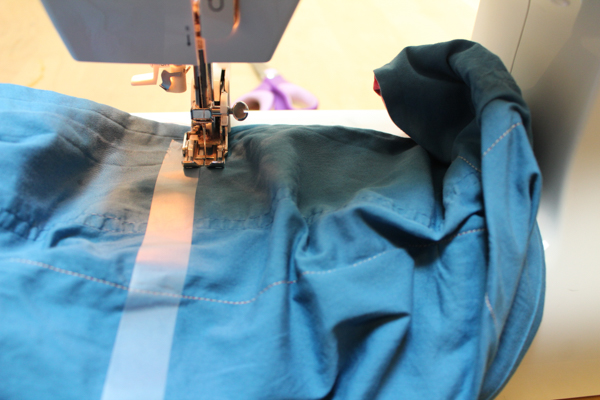I originally published this tutorial on Crafting a Green World.
Quiltmaking is surprisingly mathematical. If you love to sew quilts, then whether you realize it or not, your geometry and trigonometry skills are probably on point!
Why not celebrate how mathematically beautiful a well-made quilt is by making a quilt out of one of the most beautiful mathematical sequences that we know so far.
Let's sew a Fibonacci quilt!
The Fibonacci sequence, named after the guy who first noticed it, is a series of numbers created by adding up the two previous numbers in the sequence. You're given 0 and 1, so add them together and the next number is also 1. 1 and 1 make 2, but then 2 and 1 make 3. 3 and 2 make 5, 5 and 3 make 8, and you can just keep going, ad infinitum.
To make the Fibonacci squares, use each of the Fibonacci numbers as the length of the sides of a square--leave out 0, because that doesn't make a square, of course. Piece them together in a spiral, much like a log cabin quilt block, and you'll have a Fibonacci rectangle that looks like this:
 |
| CC BY-SA 4.0 |
We're going to go up one more number in the sequence, all the way to 34, because that's the last number in the sequence that you can make from one continual piece of yardage. Here, then, will be the finished measurements of the quilt pieces that you'll need:Now, pretend that each of these squares is the finished measurement of a quilt block--wouldn't that make an absolutely beautiful quilt?
- 1"
- 1"
- 2"
- 3"
- 5"
- 8"
- 13"
- 21"
- 34"
I used a quarter-inch seam allowance on all of the pieces, so add a half-inch to each of these measurements when you cut your quilt pieces.
You will also need the following:
- one 34"x55" piece of backing fabric. I backed this quilt with nothing but another piece of quilting cotton, and I am in love with how light it is. Not every quilt has to be warm enough for winter--some quilts are destined for summertime naps on the couch!
- double-fold bias tape. You can make your own double-fold bias tape, but I buy mine from Laceking on Etsy.
- cutting and sewing supplies.
1. Pre-wash, measure, and cut fabric pieces. Don't forget to add 1/2" seam allowance to each measurement!
2. Piece the quilt. This Fibonacci quilt is easy to piece--just follow the above diagram, adding each piece in numerical order of its measurement. Be very strict about your 1/4" seams, and iron after every seam. I like to use a walking foot when I sew quilts, so if you're struggling to feed your fabric evenly, that might be worth checking out.
3. Put the front of the quilt with the back, wrong sides together. Pin it as much as you can stand to!
4. Sew double-fold bias tape all the way around the quilt. Miter the corners as you go to save time--I really like the first method shown in this video.
When you're finished, you'll have a lovely, light summer quilt that's both aesthetically and mathematically beautiful:
Interested in more cool math activities? Check out my list of even MORE fun Fibonacci sequence stuff!
Now get back to your sewing machine and get going!





























.jpg)
.jpg)
.jpg)
.jpg)


















